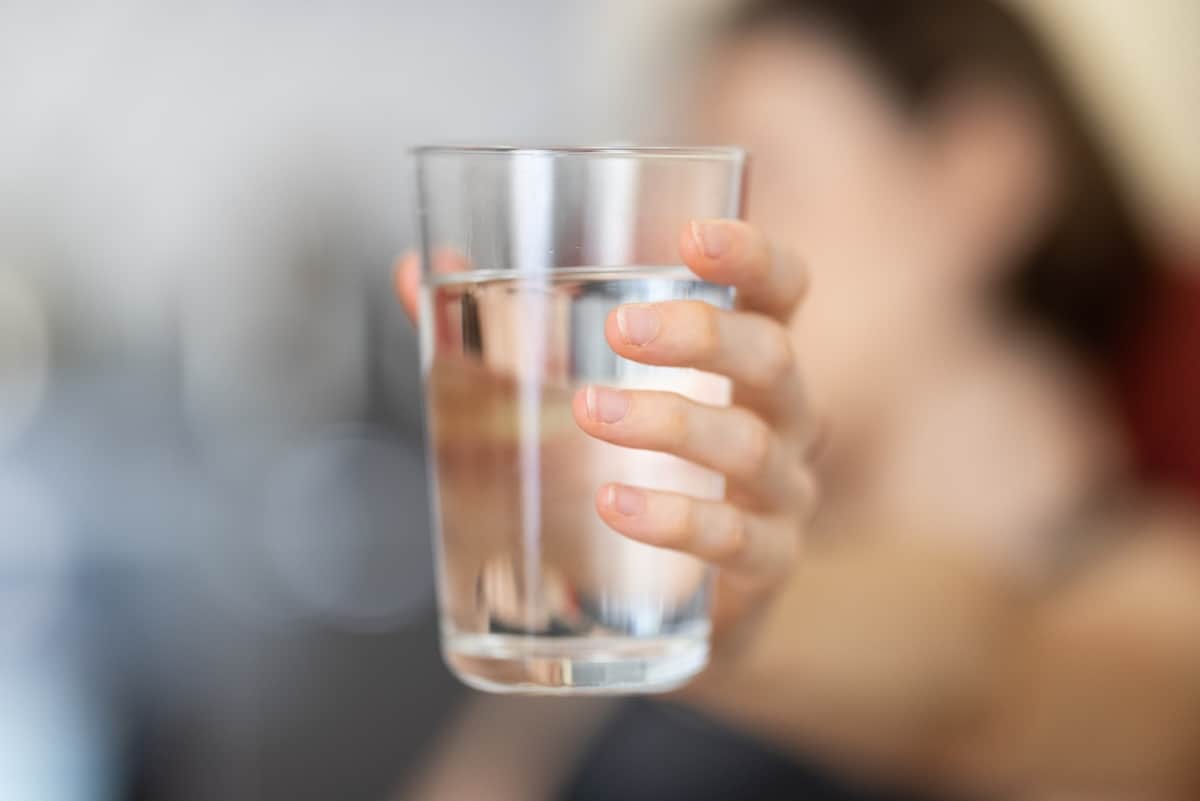E. coli in water is a major cause of waterborne and food-borne illnesses. Harmless Coli or coliform bacteria already exist in the lower gut of humans and animals. And, while most of the hundreds of strains of Coliform bacteria do not cause sickness, the bacteria in drinking water is a strong sign that other disease-causing organisms are also in the water system.
Then there are those Coli strains that will directly cause sickness in the stomach, intestines, or bloodstream. These Escherichia coli or E coli strains are extremely toxic and will trigger a host of symptoms that can even result in death.
The largest E coli outbreak occurred at a county fair in 1999 and was because of E. coli contaminated drinking water and resulted in the hospitalization of 781 people.
There are ways to detect, prevent, and treat E. coli in water coming from a municipal water supply, a private well, or other water sources with animal contact, like streams or swimming holes using a home UV water filtration system.
But first, let’s define E. coli more deeply.
What Is E. coli?
As part of the larger group of Coliform bacteria, E. coli is found naturally in some areas of groundwater and dirt. However, the most common forms are in the feces of humans and other warm-blooded animals. Humans most often interact with E. coli when they consume contaminated drinking water or foods like vegetables not cleaned thoroughly. Or the food was rinsed with E. coli contaminated water.
A rod-shaped strain of E. coli bacteria, known as E. coli O157: H7, is commonly associated with stomach cramps, nausea, diarrhea, and vomiting. This is most associated with food poisoning or waterborne E. coli illnesses.
Microscopic, single-cell organisms usually cause E. coli bacterial infections. You can’t tell by the naked eye that E. coli is present in water or food. While people, animals, and plants need good bacteria to thrive, there are a few bacteria strains that are harmful.

How Does E. coli Get in Drinking Water?
There are many ways E. coli can get into residential and commercial drinking water systems. Some examples include:
- Municipal piping systems are experiencing a sewage overflow or are not working.
- Water runoff into private wells from soil contaminated with feces.
- Storm water runoff of contaminated groundwater into homes and cracked water pipes, etc.
- The drinking water in rural homes with live animals such as sheep or chickens can become contaminated with E. coli bacteria from animal feces.
- Food that has been cooked or rinsed with E. coli contaminated drinking water in grocery stores, restaurants, or homes.
Symptom of E. coli Food Poisoning
The symptoms of drinking water with E. coli or eating foods with traces of the bacteria are very obvious. Typically, the person will become sick within 24 hours of ingesting E. coli bacteria. But sometimes, it may take up to a week to experience the symptoms of drinking E. coli in water.
A person may experience one or more of the following symptoms after drinking E. coli in water:
- Mild to severe diarrhea, which may also be bloody
- Cramping or pain in the stomach or mid-section
- Upset stomach, vomiting, or nausea
- Lethargy, fever, or chills
If you or someone in your home is experiencing these symptoms and you fear it may be linked to E. coli, contact your medical professional. You should especially do so if the symptoms do not pass or if the symptoms become severe.
How To Detect E. coli in Water
If you live in an urban area, you have likely experienced a “boil water alert” after an underground water pipe has broken or the community’s storm water system is backing up. The problem with these broadcast alerts is that not everyone will get the message, and many people are simply not paying attention.
Homeowners can use other ways to detect E. coli in water, such as using a litmus paper strip. The litmus paper strip changes to a pink-red color when dipped in water samples that contain E. coli bacteria.
We recommend scheduling a professional water test with a team of water specialists to quickly and accurately uncover what’s in your water. Companies like ONIT Home provide this service free of charge. Schedule your free water test here.
The best way to avoid getting sick from E. coli in water is to create an environment that prevents the bacterial colonies from thriving and killing existing E. coli in water. You can accomplish this with a UV water filtration system that removes chemicals and deadly bacteria from your home’s drinking water – quietly and effectively.
What Are Ultraviolet (UV) Water Filtration Systems?
A UV water filtration system uses the power of ultraviolet light rays that effectively penetrate and destroy harmful bacteria and other pathogens in your home’s drinking water.
UV light attracts the DNA of harmful pathogens. Not only can it kill existing bacteria, but this highly effective light source can prevent bacteria from reproducing. This technology that kills E. coli in water is a way to disinfect your water before drinking it or using the water to prepare foods.
Ultraviolet (UV) water filtration systems are simple to install. They’re also easy to use and are environmentally safe while killing 99.99% of harmful microorganisms without adding chemicals.
When used with other water purification systems like carbon block filters or reverse osmosis systems, your family can feel confident that the water coming from your home water supply is perfectly safe and free of deadly or disease-causing pathogens.

Features and Benefits of UV Water Filtration System
- UV purification is chemical-free and leaves your water without any harmful chemical by-products like chlorine.
- It operates on very little energy – about the same power it would take to run a 60 watt light bulb.
- Destroys illness-causing microorganisms by attacking their genetic core (DNA).
- UV systems leave no chemical taste or smell, unlike chlorine-based systems.
- It is low maintenance, set-it, and forget-it type of system. Simply change the UV bulb annually.
- Great for residential point of entry water systems to help disinfect the home’s entire water supply.
- UV light will destroy E. coli, cryptosporidium, giardia, or any other types of bacteria and viruses in the water.
How Long Does a UV Filtration System Last?
UV water filtration systems have an impressive life cycle. These systems can last for several years. The only component that you need to replace is the UV light bulb. The light bulb usually lasts up to 9,000 hours or about one year.
These systems are designed to run continuously, but quietly, in the background of your home’s water system. Visitors and friends would never know your water was being filtered by UV light, except for the fresh, untainted taste of your drinking water.
Many homeowners use the UV water filtration system as an environmentally friendly way to eliminate the use of plastic bottles.
How Much Do They Cost?
UV water filtration systems can range from $500 to $1500. Oftentimes, the price will depend on the size and complexity of a system. Some systems are countertop and made for your home’s drinking water point-of-use. They attach to your kitchen’s water piping or faucet.
Other ultraviolet water filtration systems are commercial-grade and are made for whole house water purification. You can install these UV systems at the point of entry. These systems are installed near your home’s water tank to purify all the water in your home. This includes bathing water, the water that enters your dishwasher, and the water coming from all sink faucets.
Factors That Affect the Cost of a UV Light Water Filtration System:
- Size of the system or how many gallons of water per hour are purified
- Number of stages – some systems filter and purify in multiple stages
Looking to save money? When you get a UV water filter from ONIT Home, you can enjoy clean water at an affordable price as well as the perks of a whole home water filtration system.
How To Maintain a UV Filter
Whole house water system filters are critical to the continued purification of the home’s drinking water. Throughout use, these filters will catch bacteria and sediment that typically pass through water pipes and out of your water faucet.
Depending on the cleanliness of your municipal system’s water supply, the filter on your water system may require changing after six months. Since the UV water filters are relatively inexpensive, your home will still save money when compared to the price of buying bottled water for six months.

Keep Things Simple With a Professionally Installed UV Water System
Trust that your water is free from harmful bacteria, such as E. coli, and other contaminants when you install a home water filtration system from ONIT Home. We’re in the business of making sure every family has access to clean and healthy water. We have the cutting-edge products you need to rest easy knowing your water is safe, including UV purification. Call us at 1-833-433-0331 to learn more about our variety of solutions.



